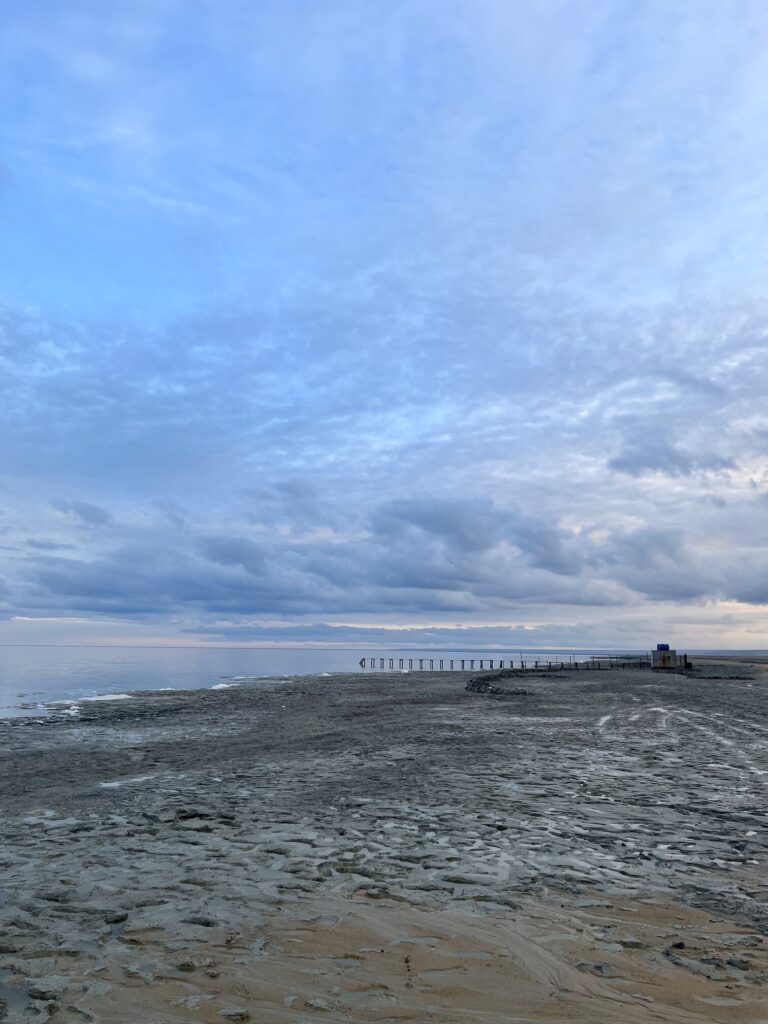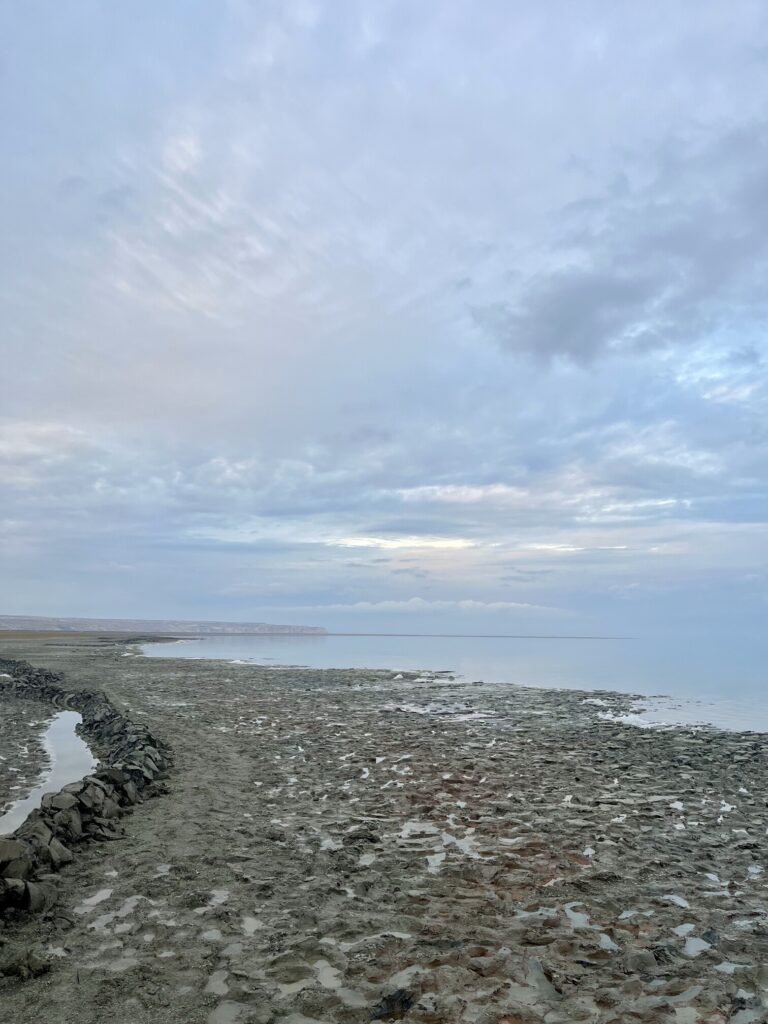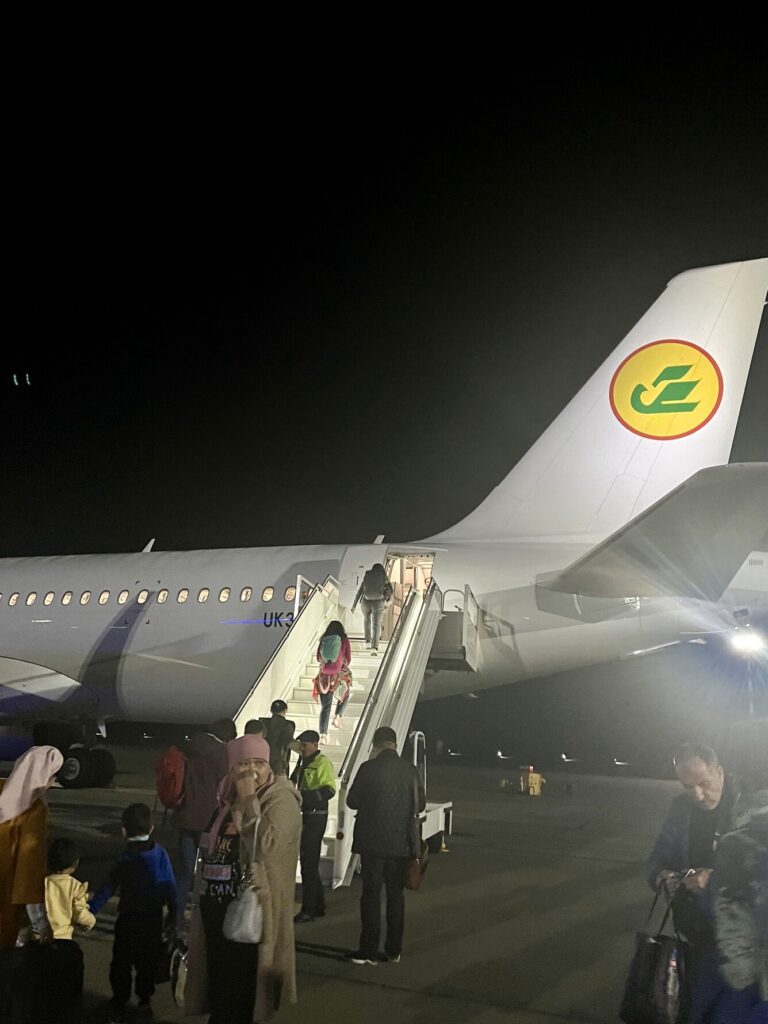For this part of the trip, we booked a private tour which brought us from Khiva to Nukus and the banks of the Aral Sea, covering over 1000km in 2 days. Now that I’ve made it out alive, I can say that this is one of the few trips I wouldn’t recommend doing, unless you’re really into dark tourism.
We set off at 6am from Khiva, stopping at some Zoroastrian monuments along the way. Zoroastrianism was the state religion of the Achaemenid empire, which covers parts of present day Uzbekistan. Its decline was the result of the rise of Islam in the 7th century.




We arrived in Nukus and changed into a four wheel drive, because the road after Nukus out into the Aralkum desert was beyond atrocious (that is if you can even call it a road). The Aralkum desert appeared in the 1960s on the seabed which used to be occupied by the Aral Sea. Once the fourth largest sea in the world, the shrinking of the Aral Sea is one of the greatest man made ecological disasters in history. It was due to Soviet projects that diverted water from rivers that flowed into the sea (Amu Darya and Syr Darya) to irrigate cotton plantations, also known as Uzbekistan’s white gold. Uzbekistan is the 9th largest cotton exporter in the world, and non retail pure cotton yarn is the country’s 2nd largest export after gold. Only 10% of the sea remains today.




We headed to Moynaq, a town once on the banks of the Aral Sea before the sea shrank and the bank shifted 150km away. Moynaq used to be a sea port, where fishing and canning was the main industry. Now that industry has all but completely vanished. Today its most famous sight is the graveyard of abandoned rusting ships lying on the desert sand which was formerly the bottom of the Aral Sea. There were remnants of broken seashells and corals in the sand so fine that it felt like a beach, only we were in the middle of the desert.
The desertification of the sea resulted in the increased salinity of water, degrading all arable land around it. Dust storms also increased the prevalence of severe respiratory problems in local populations. Visiting Moynaq was a horrid, horrid reminder of the potential of human desecration of nature, and the legacy the Soviets left behind.






The drive after Moynaq to the Aral Sea was THE MOST hair raising in my life, and I struggle to see another one beat that. The “road” was just tire tracks left in the ground by previous four wheel drives. That’s usually not a problem, but for the first quarter of this trip, the ground was extremely soft mud, and following the path left by previous cars meant you were digging yourself deeper into the trench. The mud kept sucking in the wheels and releasing them like a slingshot after acceleration. Hence our driver drove with one side of the car right on the edge of the trail, which meant the car was leaning at an angle of 30 degrees, while bouncing on the uneven mud terrain.
The last three quarters of the trip was pure, unadulterated, barren desert. The kind of landscape where you can see for miles on end and probably why the flat earth theory exists. We did not see another living thing apart from desert bushes for hours, neither did we pass any another vehicle. Who cares about getting stuck in the mountains in Tajikistan, over here there is no village or civilisation in any direction, and with zero cell phone towers, forget 2G to save your ass. There is no back up, you are your own back up. At one point I hallucinated and thought a bush was a car. And because the ground here is hard, the wheels of our car would keep slamming against unsuspecting rocks and send us flying before crashing down. Our driver was also speeding like a madman, so when the car bounced, we were trashed violently around in inside. Our luggage at the back suffered more abuse than by handlers at airports. If you were dozing off, your neck will snap. Sometimes our driver would slow down if he saw uneven ground, but he would apply the brakes all of a sudden and too late, and you can hear the suspension of the car creaking under the immense g force.




By the powers beyond me, the entire car remained in one piece. No tires popped, no engine died, no gas leaked. And by the powers vested in me, I hereby recommend the tried and tested Toyota Land Cruiser Prado as your choice of four wheel drive. In a country where 90% of cars are Chevrolets (this is not a joke, look it up), the fact that only a Toyota is good enough for the job for them to be willing to pay extra to import it, tells you everything you need to know.
Our driver asked us very unironically if we would swim in the Aral Sea. There is only one answer and it should be a resounding no, but apparently many dark tourists do it anyway. The Aral Sea is a cocktail of salt and toxic pesticides. No fish species survived its desiccation. It gets more concentrated every year as more water evaporates than flows into it.




There were at least two yurt camps on the current banks of the Aral Sea. I don’t know how they managed to transport everything they needed here; this is as isolated as you can get. Nothing grows on this soil so our driver stocked ingredients for dinner and breakfast from Nukus in the car. Water for the sink comes from a water tank, though I don’t know how it’s filtered. (Edit: I would know more if we had added on a guide but that would be 25% more expensive than the already exorbitant price of $600 for the whole trip. The driver would typically speak minimal English.) The toilet was a shed with a hole in the ground inside it. There were four mattresses inside each yurt; it was *the most* comfortable mattress I had slept on in Uzbekistan because it wasn’t rock hard. There was also a stove inside where you had throw wood in every three hours to keep warm. The fumes get channeled out of the yurt through a metal chimney. In the middle of the night, we were met with rain and howling winds that kept slapping the fabric covering the yurt outside.








After one night, we made the same hair raising drive back to Nukus. By the way the car was being thrashed, I suddenly found faith and kept praying for safe passage.




We arrived in Nukus and had four hours to kill before our flight back to Tashkent. Nukus is the capital of Karakalpakstan, an autonomous republic in Uzbekistan where the people are more culturally similar to Kazakhs than Uzbeks. There’s not much to do; there is only one attraction and it is the Savitsky Museum of Art.




And with that, we arrived back in Tashkent where we spent two more nights but I had already covered all of it in the Tashkent post. Moral of the story: you will get diarrhoea so you have to be okay with it; bring the whole toilet roll with you everywhere (I have EL to thank for this); apparently it’s the melons (and fruits in general) but the melons taste amazing; order hot tea in restaurants and buy juice from the supermarket; trust Google reviews for which restaurants not to go to; read up on the place before going because you ain’t getting much info there; buy homemade jam for me if you ever visit.

Hi! I am Joey, a University student from Singapore, attempting to show my appreciation for the world’s most powerful passport by literally milking its visa-free benefits one country at a time. I describe my travel budget as shoestring and travel style as audacious.

Slide into my comments section...